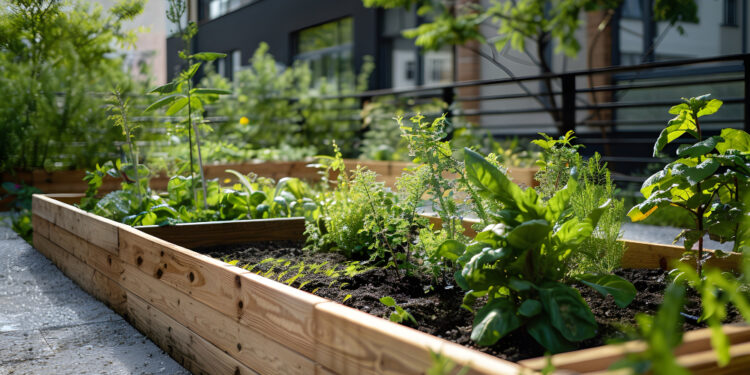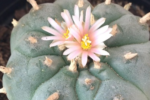What’s the Easiest Fruit and Vegetables to Grow: A Beginner’s Guide

Are you looking to start your own vegetable and fruit garden but need help knowing where to begin? Do you have a green thumb but want to know which crops are the easiest for a beginner to grow? I remember being in the same boat when I started my gardening journey.
I was overwhelmed with the endless options and didn’t know where to start. Now, I want to share my knowledge and experience with you so you can have a successful and rewarding gardening journey.
Related Reading: How to Start a Home Garden: A Guide for Beginners
Why Grow Your Own Fruits and Vegetables?
It is well known that fruits and vegetables are vital components of a nutritious diet. They provide us with vitamins, minerals, and fiber crucial for our overall well-being. However, buying organic produce can be expensive and only sometimes readily available. That’s where growing your own fruits and vegetables can be a great solution.
Not only will you have access to fresh and organic produce, but gardening also has numerous other benefits. It can reduce stress, improve mental health, and connect you with nature. Plus, it’s a fun and productive hobby that the whole family can enjoy.
Factors to Consider Before Choosing What to Grow
Before I talk about the easiest fruits and vegetables to eat, there are a few factors you should consider. This will help you decide which crops suit your garden and lifestyle.
Climate
The climate is a crucial factor to consider when choosing what to grow. Different plants thrive in various climates, so it’s essential to research what grows best in your region. Some vegetables, like tomatoes, thrive in warm weather, while others, like lettuce, prefer cooler temperatures.
Space
The amount of space you have available will also determine what fruits and vegetables you can grow. If you have a large backyard, you can plant a variety of crops. However, if you live in an apartment with a small balcony, you may opt for smaller plants like herbs or cherry tomatoes.
But don’t be discouraged if you have limited space. You can still grow a variety of fruits and vegetables in containers or vertical gardens.
Time and Effort
Gardening can be simple, especially if you choose the right crops. As a beginner, it’s important to start with fruits and vegetables that require minimal maintenance. Consider how much time you can realistically dedicate to your garden each week.
Some plants, like radishes and green onions, grow quickly and are almost maintenance-free, making them perfect for those with busy schedules. On the other hand, plants like bell peppers and zucchini may require more attention and time.
What’s the Easiest Fruit and Vegetables to Grow
Easiest Fruits to Grow
Now that you have an idea of what to consider when choosing what to grow let’s talk about the easiest fruits for beginners.
Strawberries
Strawberries are popular for novice gardeners because they require little space and maintenance. They can be grown in small gardens or containers, making them suitable for urban gardening. They also produce sweet and juicy fruits that are perfect for snacking or using in desserts.
To grow strawberries, you will need well-draining soil and plenty of sunlight. They also need regular watering to keep the soil damp.
Blueberries
Blueberries are another easy-to-grow fruit that is packed with nutrients like Vitamin C and antioxidants. They thrive in acidic soil and prefer cooler temperatures, making them a great option for those living in temperate climates.
You can plant blueberries in pots or directly into the ground. However, they require more space than strawberries, so ensure you have enough room before planting. They also take a few years to reach full production, so patience is key with this crop.
Raspberries
Raspberries are another low-maintenance fruit that can be grown in containers or gardens. They prefer cooler temperatures and well-draining soil. Like blueberries, they may take a few years to reach their full potential, but the wait is worth it for these delicious and nutritious berries.
Most raspberry varieties produce fruit on second-year canes, so make sure to prune the first-year canes to allow for new growth.
You may need: Effects of Climate Change on Agriculture
Easiest Vegetables to Grow
Now, let’s talk about the easiest vegetables to grow for beginners. These low-maintenance options are perfect for those just starting their gardening journey.
Lettuce
Lettuce is a quick-growing and versatile vegetable grown in containers or gardens. It thrives in cooler weather, making it an ideal choice for early spring or fall planting. Lettuce also only requires a little space and can even be grown indoors near a window.
There are many varieties of lettuce to choose from, so experiment and find your favorite!
Radishes
Radishes grow super fast, making them great for newbie gardeners. They can be planted in containers or directly into the ground and are ready to harvest in just a few weeks. They also don’t require much maintenance, making them ideal for those with busy schedules.
Green Onions
Green onions, also known as scallions, are a staple in many dishes and are incredibly easy to grow. You can plant them from seeds or use the leftover roots from store-bought green onions. They take up very little space and require minimal effort, making them a great option for any gardener.
Final Thoughts
Growing your own fruits and vegetables can be a rewarding and beneficial experience. With the right knowledge and considerations, anyone can start their own garden regardless of their space or experience level. Start with these easy-to-grow options and watch your garden flourish.
So, if you’ve been considering starting a garden but have been hesitant, now is the perfect time to give it a try.
FAQs About Easiest Fruit and Vegetables to Grow
Which Fruits and Vegetables Are the Easiest for Beginners to Grow?
Some of the easiest options include strawberries, blueberries, raspberries, lettuce, radishes, and green onions.
Do you think I need a lot of space to kick off a garden?
No, you can still grow various crops in containers or small spaces like balconies or window sills.
How much time does gardening require?
It depends on the plants you choose. Some low-maintenance options like radishes and green onions only require minimal effort and time.
Can I grow fruits and vegetables year-round?
The answer varies based on your climate and the kind of plant. Some thrive in cooler temperatures, while others require warmer weather.
What advantages come from cultivating your own fruits and vegetables?
Growing your own produce is a cost-effective and sustainable way to have fresh and nutritious food. It also lets you control what pesticides or chemicals are used in your food.
Do you need help to start a garden as a beginner?
No, with some research and planning, anyone can start a garden regardless of their experience level.
Will I need specialized equipment for gardening?
Not necessarily; simple tools like a shovel, trowel, and watering can suffice for most plants. However, larger gardens may benefit from additional equipment like a wheelbarrow or hoe.
Can I grow fruits and vegetables indoors?
Yes, certain plants like lettuce and herbs can be grown indoors near a sunny window. However, most fruits and vegetables require outdoor growing conditions.
Read More:






